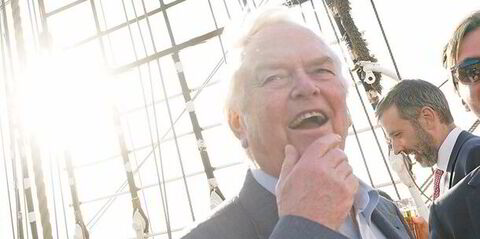The London Club is the last of the International Group protection and indemnity mutuals to open its books to S&P.
The move from a public information to an interactive rating follows a similar shift by the Britannia Club with the threat that a change of strategy by S&P might result in a rating withdrawal providing a notable shove.
S&P assesses the outlook for the London Club as stable but has some tough things to say about the mutual that has the worst underwriting performance in the International Group.
The good news is that for all its conservatism the London Club recognises that its underwriting performance needs to improve and is currently focussed on achieving this.
S&P also acknowledges the London Club chaired by John M Lyras has a strong reputation for service, a stable and loyal membership with financial strength remaining strong and buttressed by the ability of P&I clubs to make cash calls.
Here are some of the things that S&P had to say about the London Club:
“We view the club's competitive position as less than adequate, it has found it difficult to convert its solid niche market position into reasonable technical operating performance. This constrains the rating.
“Since 2010, the London Club has produced combined ratios of between 119% and 128%. (Lower combined ratios indicate better profitability. A combined ratio of greater than 100% signifies an underwriting loss.) These results represent the worst performance in the International Group by some margin.
“There has also been little improvement over the past five years, suggesting to us that the club's power relative to its members is weaker than that of its peers,” the rating agency added.
Despite the stable outlook S&P believes it will take the London Club several years to get its combined ratio down to a more sustainable, but still loss incurring 110%, level. Low interest rates and the volatility of financial markets limit the ability to rely on investment income, which ran to 7% last year.
S&P said it regarded the London Club’s plans for improving the technical result “as measured and achievable” but warned that red ink was in prospect.
“We expect that the club will make a bottom-line loss of $11 million across the three financial years 2015-17. Although we expect that the combined ratio will fall to 118% by financial year 2017 from the 128% seen in financial year 2014, we do not expect that investment income will be able to make up the gap and enable the club to make a profit, as it has in recent years.
“We expect that the London Club's capital base will shrink over financial years 2015-2017. Nevertheless, we expect that the club's capitalisation will remain extremely strong according to our capital model and that it will remain a key strength of the rating," noted S&P.
London Club chief executive, Ian Gooch, seized on the positive things S&P had to say and gave this response:
“A key and pleasing element in the interactive rating is S&P’s positive assessment of the club’s financial strength, with capitalisation to remain extremely strong according to their capital model.
“At the same time – and as in S&P’s previous public information based ratings – the levels of our recent combined ratios are highlighted as constraining the rating.
“This is an aspect of the club’s performance which we are focused on improving so it is therefore also pleasing to note S&P’s views on the measured and achievable planning that we have in place to strengthen technical results.”



